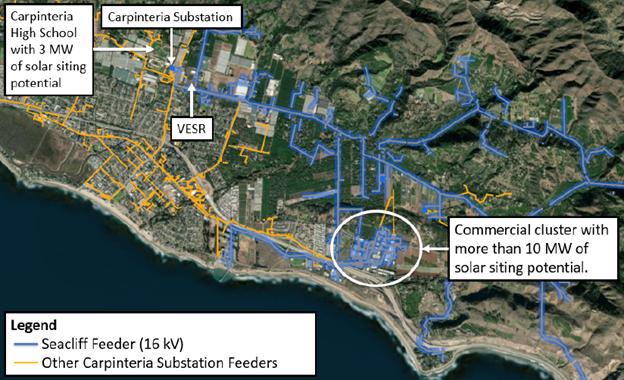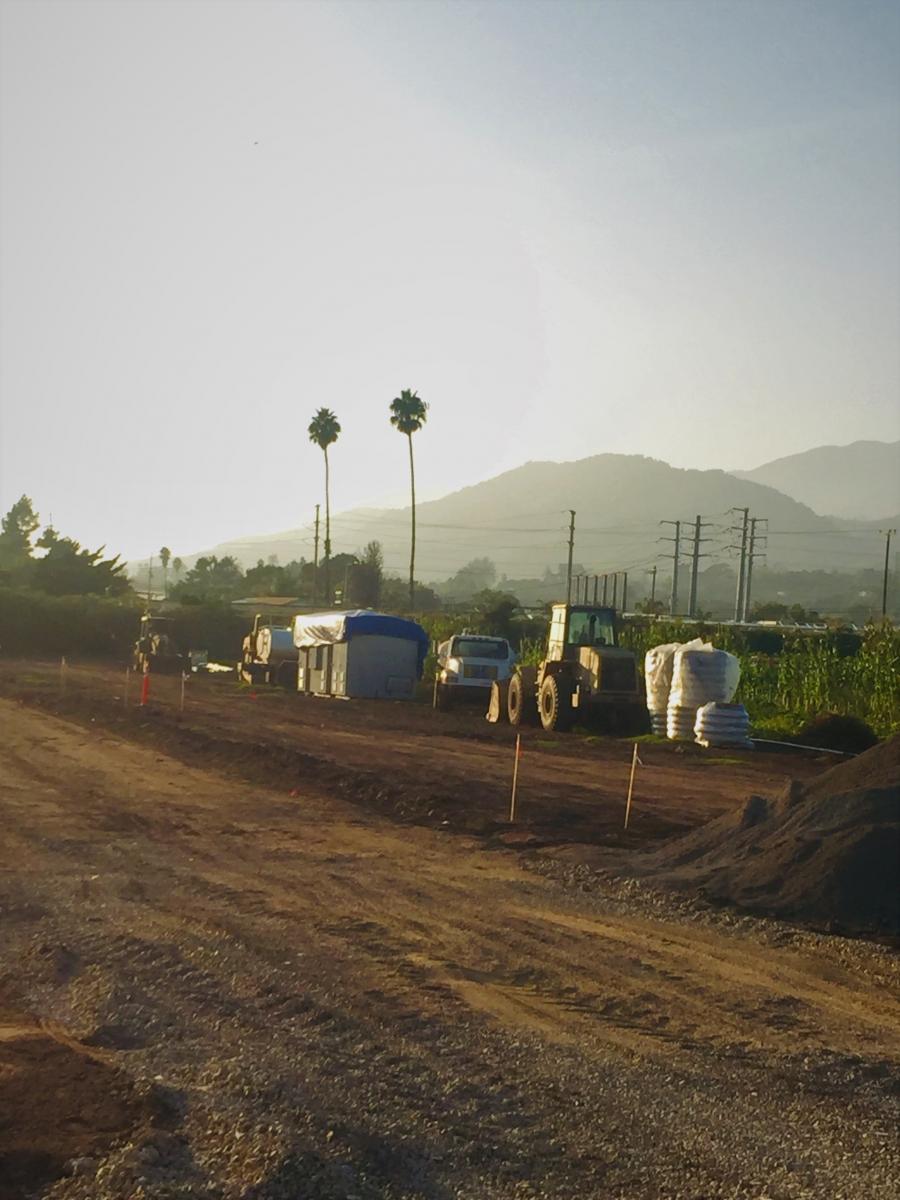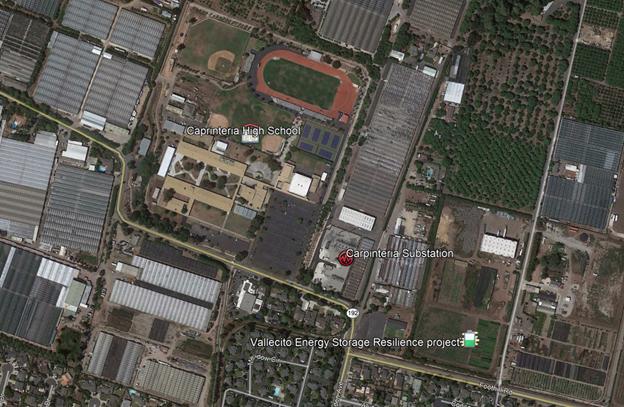Publisher’s Note: Sometimes the need for resiliency hits close to home, making the movement toward power systems that withstand catastrophes while continuing to deliver energy for our daily lives more urgent.
This story strikes that chord. Our own Microgrid News editor lives in an area impacted by recent fires. Here she shares an up-close view of the disruption of wildfires and the building of a microgrid that will serve her community, making it more resilient and less prone to power shutoffs that have become a regular part of life in much of California.
The Goleta Load Pocket (GLP)—an area served by Southern California Edison’s (SCE) 70-mile transmission line—has been hard hit by natural disasters in recent years. Since 1990, 13 major fires have burned a total of 662,734 acres. In 2018 mudslides destroyed 400 homes and killed 23 people. Nestled at the southern end of the GLP is a little town called Carpinteria, which I call home.
Only months ago, after the Thomas Fire incinerated the landscape, my neighbors and I watched awe-struck as cranes replaced massive distribution towers and daring linemen dangled from helicopters to string new cables. This summer we worked on laptops outdoors when heat waves precipitated emergency power shutoffs to prevent more wildfires. In the last 20 years, our community has become painfully aware of the precarious nature of our energy infrastructure—as well as the need for resilience.
The GLP service area extends from Point Conception to Lake Casitas and provides power for about 300,000 residents. Its position at the end of the grid, coupled with its reliance on power from one set of transmission lines that cross 40 miles of mountainous terrain, makes it highly vulnerable. Southern California Edison (SCE) has confirmed that the transmission lines are at risk of catastrophic failure due to fire, earthquakes, or heavy rains and has said that if they go down, a blackout could last weeks or even months.

The Clean Coalition, a non-profit formed to accelerate the transition to renewable energy and a modern grid, recognized the GLP’s need for resilience and set out to identify solutions. In 2015, the organization began laying the groundwork for a reliable, renewables-based power network. Based on the area’s load requirements, the Clean Coalition determined that the GLP needed 200 MW of solar and 400 MWh of energy storage to provide the region 100% resilience.
To help address this need, in the coming years the organization plans to facilitate the development of several community microgrids to make the GLP more resilient, including one in Carpinteria. The Carpinteria Community Microgrid would be powered by more than 15 MW of solar and could serve critical community facilities, including Carpinteria High School, an official Red Cross emergency sheltering site.

The first component of a potential future Carpinteria Community Microgrid—a 40 MWh of utility-scale energy storage called the Vallecito Energy Storage Resilience (VESR) project—is currently being installed and will go online in December. The VESR project not only provides an energy storage foundation for the Carpinteria Community Microgrid, but it lays the groundwork for four additional utility-scale battery projects that are expected to come online within the GLP by March 2021.
The VESR project will supply 10% of the energy storage needed to support the GLP’s load requirements and will reduce the need for gas peaker plants. The technology, which includes lithium-ion battery cells rated at 10 MW to 40 MWh, is owned by Ormat Technologies, Inc., an independent renewable power provider. The system will consist of 15 self-contained energy storage and management cabinets, four transformers, and controls and switchgear. Each Megapack unit will be approximately 8.75 feet in height and will hold 17 battery modules; each module will hold approximately 12,636 battery cells. It will have a 16 kV interconnection to a feeder served by SCE’s Carpinteria substation. In the future, adding an advanced controller to provide monitoring, communication, and controls would enable a community microgrid.

Through a 20-year Energy Storage Resource Adequacy Agreement between SCE and Ormat, the utility will be able to utilize VESR’s energy storage capacity for a specified number of hours each month. Outside of these contract obligations, Ormat can use VESR’s resources to address its own goals, which may include participating in wholesale market opportunities like energy arbitrage and frequency regulation.
The Clean Coalition has paved the way for community microgrids in the region through public outreach, feasibility studies, planning, and design work. For the VESR project, it has aligned community partners and provided filings and commentary to the Santa Barbara County Planning commission and Board of Supervisors. And at the end of the day, it’s provided our town with a symbol of hope that extends far beyond the boundaries of its 15,120-square-foot site.
In that sense, the VESR project is pivotal not only for our community, but for other transmission-challenged places around the world. As the foundation of a microgrid and an anchor point for a more expansive renewables-based energy network, the VESR project is representative of the ultra-collaborative, local-to-global thinking that will help us create safer, cleaner, more resilient energy systems for communities worldwide.
Learn more
To learn more about community microgrids for resilience and the Santa Barbara Unified School District’s project, join the Clean Coalition’s Founder and Executive Director, Craig Lewis, at the HOMER International Microgrid Conference on October 13 for a special session about Microgrids for Emergency Response & Resilience. Attendance is free and 100% online. Visit microgridconference.com to register.
